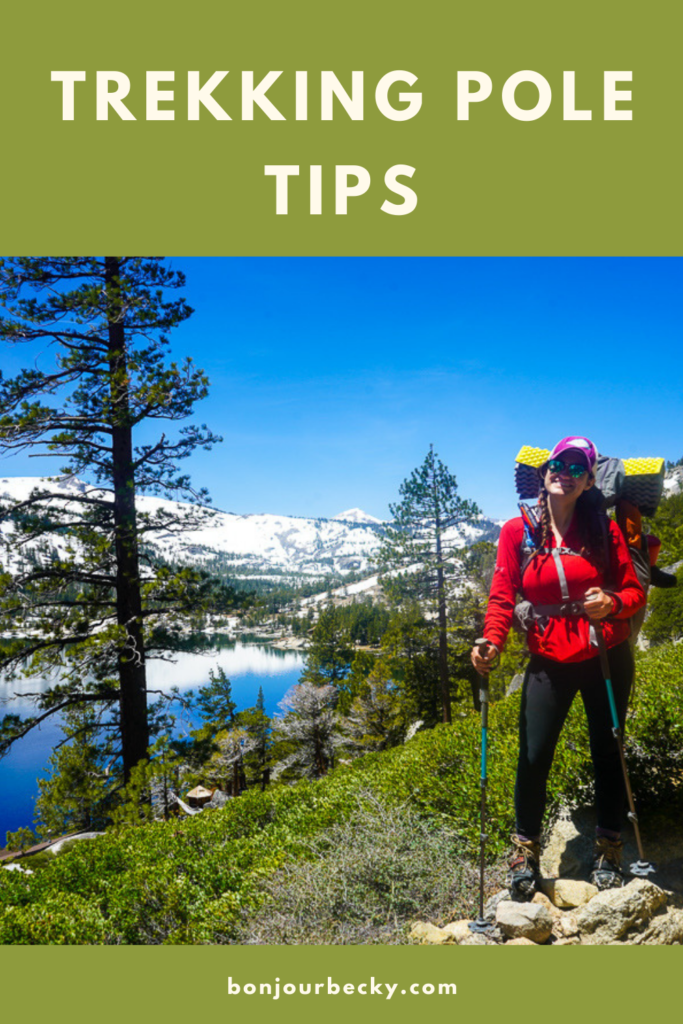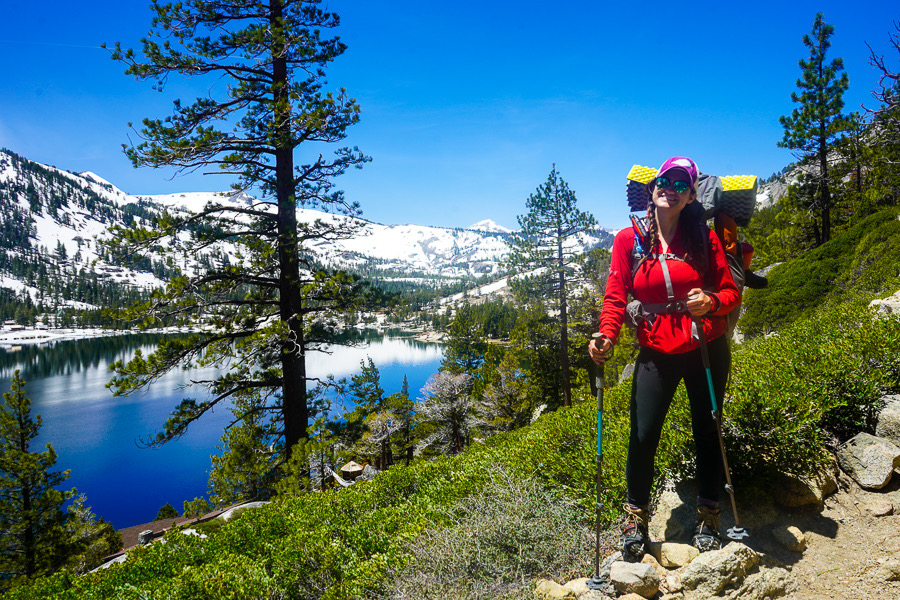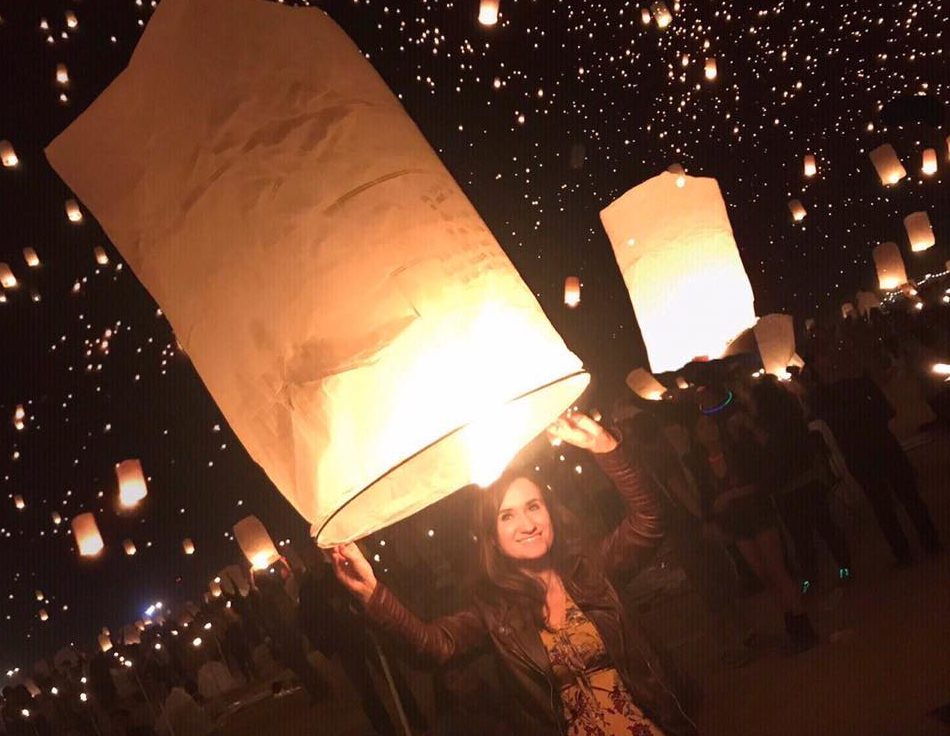I never used poles when I first started hiking and backpacking. I was young and fit so I didn’t really see the point.
But after I used them for the very first time, on a grueling backpacking trip on the North Rim of the Grand Canyon, I was hooked!
Why I love trekking poles
Four-wheel drive for your feet. Poles let you harness the power of your arms and your legs while traversing tough terrain, reducing your overall fatigue. Zoom zoom!
Easier on the knees. I’m a 20-something with the knees of a 60-something, or at least that what it feels like when I’m going downhill. (The echoes of a repetitive stress injury in my early 20s now haunting me for the rest of my days.) My knees still pain me sometimes, but now they just moan softly instead of screaming bloody murder.
Extra stability for crossing streams. Crossing streams on rickety old logs is one of my least favorite parts of hiking. Poles help me balance on logs without falling off. They also help me stay upright while I’m splashing through water, especially if there’s a strong current.
Happier hands. Without poles, my hands usually hang uselessly at my sides while I’m hiking, bumping into things and often getting puffy and swollen. Hiking poles elevate your hands and improve the blood flow, reducing swelling.
They just make you look legit. You can’t deny that poles look badass. Nothing says “hiker” like a pair of boots and poles.
What to consider when buying trekking poles
Pole Material: Carbon fiber is the lightest but most expensive, while aluminum poles are slightly heavier but also slightly more durable. If you bend an aluminum pole you can usually push it back into place, while carbon fiber poles break under similar pressure and need replacing.
Affordability: If you’re a weekend hiker/backpacker with no plans for longer thru-hikes, there’s no need to break the budget on an ultralight, ultra-expensive pair of poles. If you’re planning to hike from Mexico to Canada, though, a pricier pair might be worth the ounces saved.
Collapsibility/Packability: Most poles telescope down to a smaller size that lets you strap them to your pack when not in use. Some even collapse and fold like tent poles, making them ideal for trail runners or anyone trying to fit their poles in a suitcase.
Grip Material: Cork handles absorb sweat without getting slippery, while cheaper foam handles don’t. They’re both equally comfortable, though.
Best Trekking Poles for Hiking and Backpacking
Best Hiking and Backpacking Option: Black Diamond Trail Ergo Cork
I’ve used these poles for 4 years now and love them: comfortable, durable, and lightweight. They’re adjustable to most heights, which is why we used them for all the trips I led with Trail Mavens, and the cork handles are amazing.

Best Budget Option: REI Trailbreak Trekking Poles
I haven’t used these personally, but they get rave reviews from friends who own them (and from most of the reviews I’ve seen online.) They’re about half the price of the Black Diamond ones above with rubber handles instead of cork.

Best Trail Running Option: Black Diamond Distance Z
These babies collapse down to a super small size, so they don’t “jut off your pack like awkward antlers” when they’re not in use. The length isn’t adjustable, but they’re perfect for trail runners who only plan to use them on steep descents.

Whatever poles you choose, I recommend buying from REI, which has a wonderful 1-year return policy if the poles don’t work as well for you as you’d hoped. Plus, they’re a much better company than Amazon —for their employees and for the planet. 🙂
Do you use trekking poles while hiking or backpacking? Questions about using poles? Let me know below!




Leave a Reply